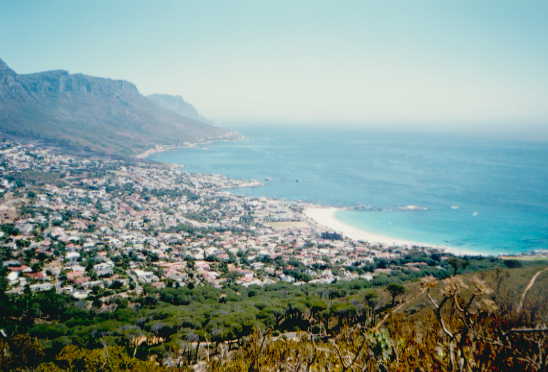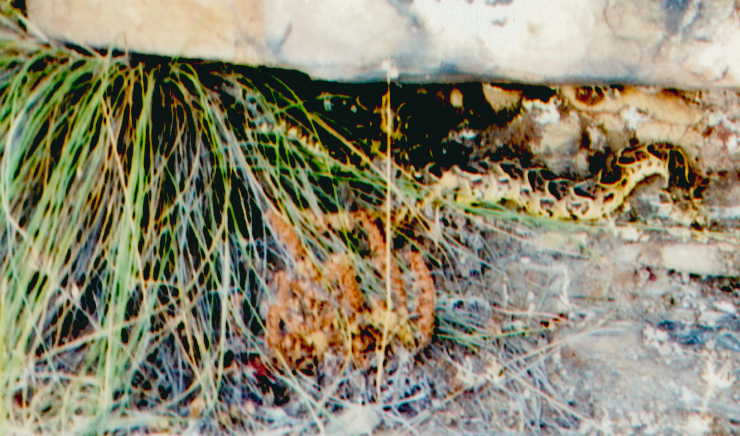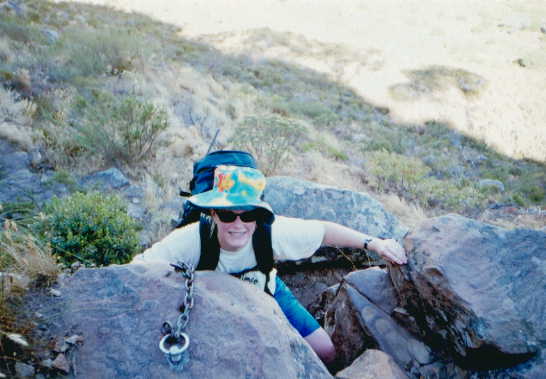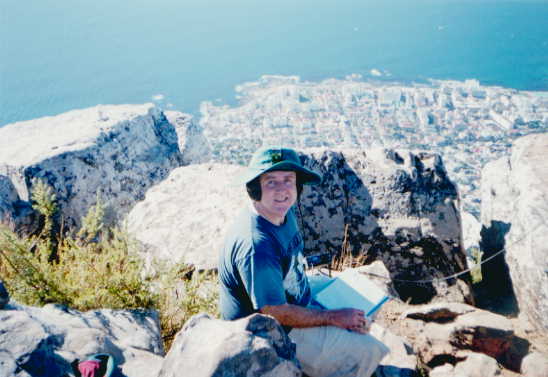
Navigation: Home Station Diary Research RAE Course Guestbook
 |
| Lion's Head |
|---|
Stacey ZR1SC and I set off from the car park at the base of Lion's Head shortly after 3pm on Saturday 11th January. The path is initially wide and well maintained, although moderately steep, and our relative unfitness was apparent in the heat of the summer - somewhere in the mid 30s Centigrade. The path circles around the mountain as it ascends, and as we came around to the North of the peak we had a beatiful view over Table Bay where numerous yachts were milling around awaiting the start of the Cape to Rio race.
 |
| The view of Camp's Bay on the way up |
|---|
About two thirds of the way up there is a steep section which must be climbed with the help of some chains bolted to the rock. At the base of the chains we were surprised to see a puff adder in the middle of the path - after some time it grudgingly slid under a bush and allowed us to pass. (Puff adders are the most common cause of snake bites in the Cape, as they make little effort to get out of the way of humans. Their venom is cytotoxic, meaning it causes local tissue damage. It is fairly slow acting but can lead to nasty injuries and even death if left untreated).
 |
| The puff adder next to the path |
|---|
We negotiated the chains without difficulty, then lost our way trying to find the path to the summit, which we eventually found after backtracking a bit. Fortunately we were in touch with David GI4FUM on 2m via the local repeater, which he was linked into over the Internet using the Echolink system. This proved invaluable as he was able to post updates on our progress to the Summits group in real time, as well as informing others of our progress over the air. Thanks Dave!
 |
| Stacey ZR1SC negotiates the chains |
|---|
We arrived at the summit about 4:45 pm local time, and were QRV by about 5 pm (1500 UTC). Since Stacey holds a restricted license and is limited to VHF operation she managed the 2m communications and very ably explained what we were doing to a number of interested hikers. I set up the K1 and worked CW on HF, calling out countries as I contacted them "that was John from England - that station was in the Ukraine - that was a Polish station celebrating the breaking of the Enigma cipher machine by Polish cryptanalysts" - and so on, to demonstrate the magic of amateur radio to our visitors. I think that the visibility which SOTA gives to amateur radio - at least when operating from popular hiking destinations - is of great benefit to our hobby.
My first contact was with John G3WGV of the Management Committee. I was especially pleased since we have not worked before, although we have exchanged many emails and John provided much assistence to us during the establishment of SOTA in South Africa. After that things were quiet for a while, with only a few local QSOs, but conditions improved around 1600 UTC and I was able to make contact with a number of European stations. All in all 10 stations worked, not a high total but not bad given the relatively poor conditions and low power.
 |
| Operating from the summit of Lion's Head with Sea Point below |
|---|
We packed up shortly after 7pm local (1700 UTC) to give us time to get down the difficult bits in the daylight, and were rewarded with a beautiful African sunset over the Atlantic. By the time we got down to the easy section of the path it was fairly dark and we were pleased that we had brought torches. Once again a wonderful experience, and many thanks to all the amateurs I made contact with - and especially to David GI4FUM for keeping us company via Echolink.